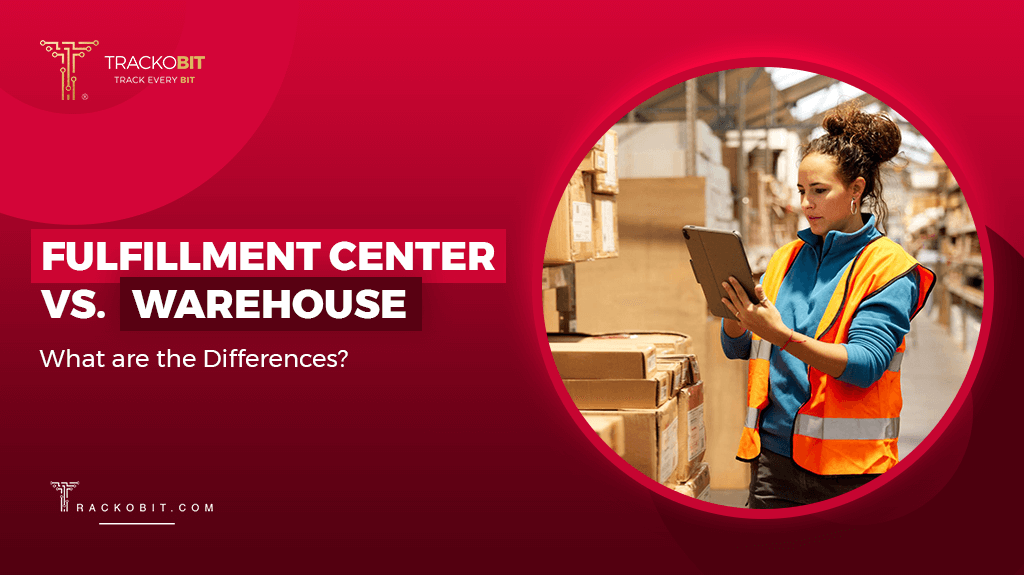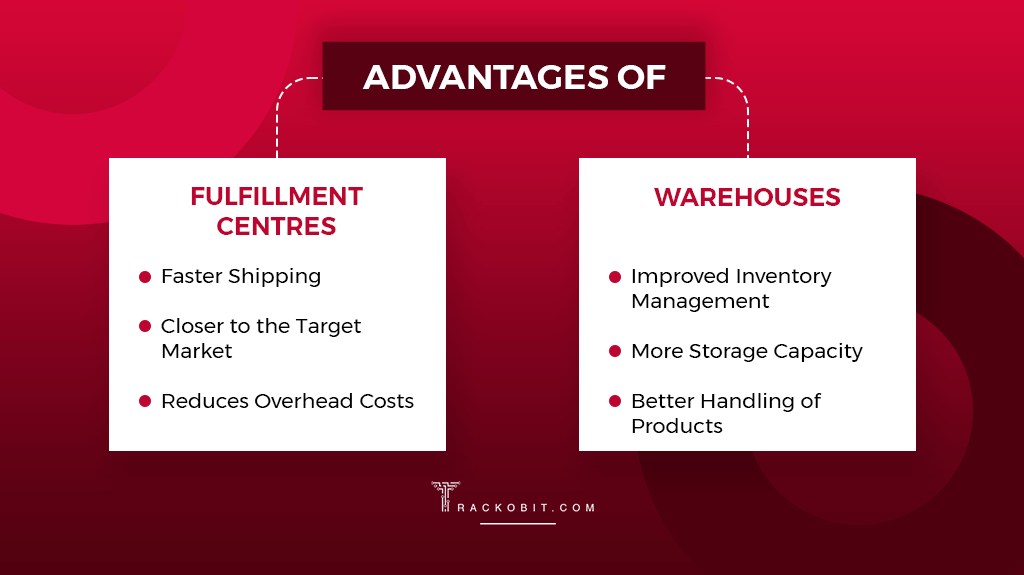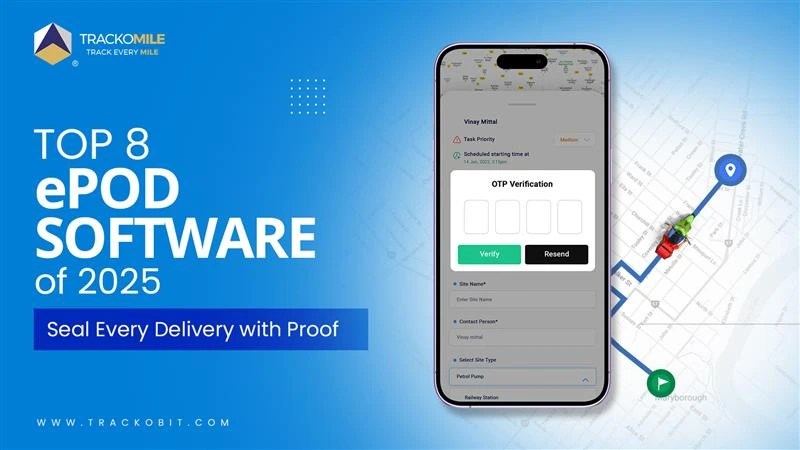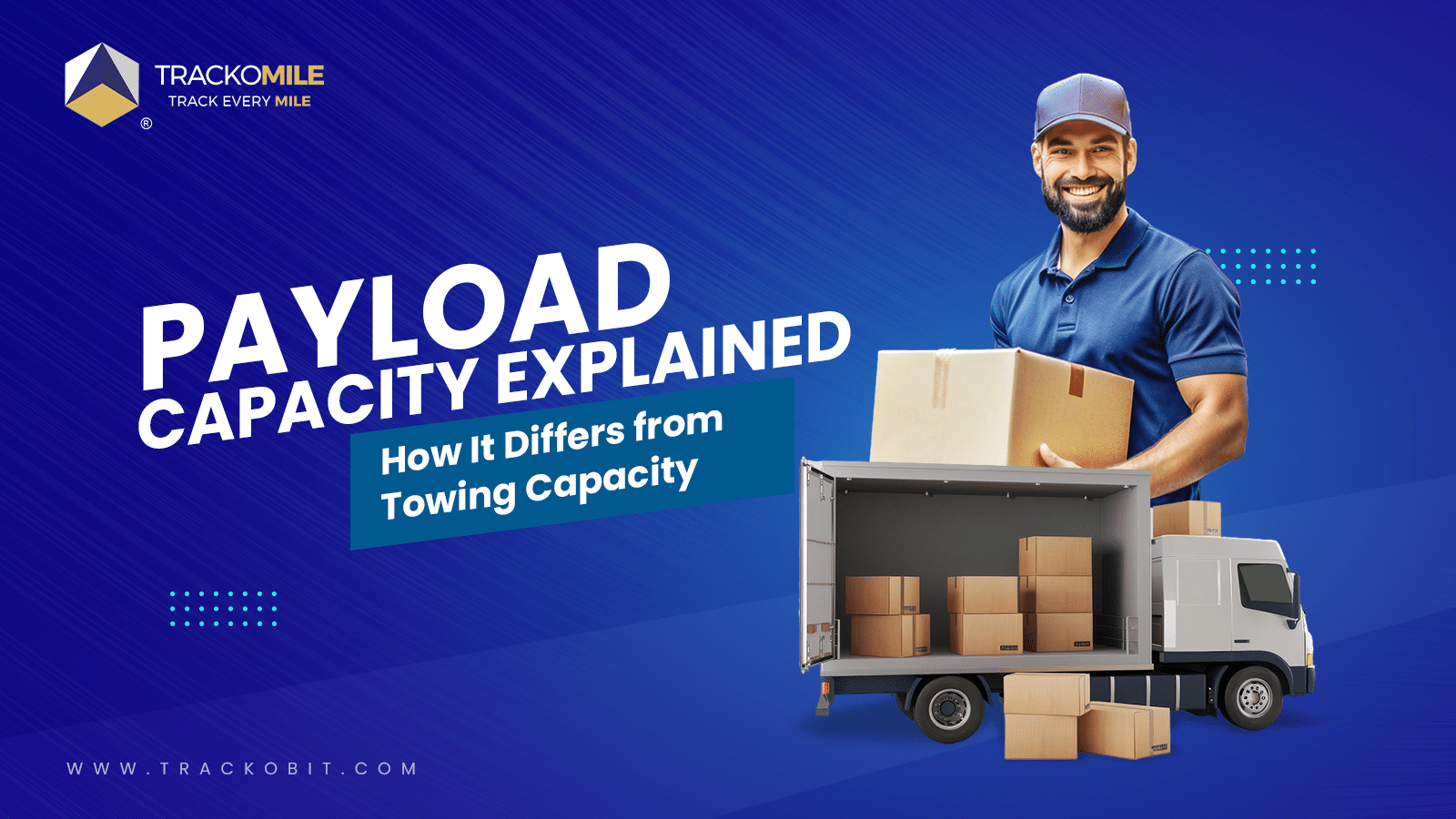-
TrackoBit
Manage commercial vehicles with the new-age Fleet Management Software
TrackoBit -
TrackoField
Streamline your scattered workforce with Field Force Management Software
TrackoField -
Features Resources
-
Blog
Carefully curated articles to update you on industrial trends. -
White Paper
Insightful papers and analysis on essential subject matters. -
Glossary
Explore an alphabetical list of relevant industry terms. -
What’s New
Get TrackoBit & TrackoField monthly updates here. -
Case Study
Explore the cases we solved with our diverse solutions. -
Comparisons
Compare platforms, features, and pricing to find your best fit.
-
About Us
Get to know TrackoBit: our team, ethos, values, and vision. -
Careers
Join the most dynamic cult of coders, creatives and changemakers. -
Tech Support
Learn about our technical support team and services in detail. -
Events
Check out the exhibitions where we left our marks and conquered. -
Contact Us
Connect with us and let us know how we can be of service.
Fulfillment Center vs. Warehouse: 4 Key Differences
- Author:Tithi Agarwal
- Read Time:7 min
- Published:
- Last Update: January 7, 2026
Table of Contents
Toggle
While Warehouses excel in long-term inventory storage, fulfillment centers prioritize rapid order fulfillment. Here are 4 key distinctions to aid in selecting the optimal shipping solution for your business.
Table of Contents
Toggle
The terms warehouse and fulfillment center (or distribution center) are often used interchangeably but can have very different connotations. Both are large buildings that hold inventory for businesses that sell goods; however, the use cases and services provided are often quite different.
Let’s break down each option, so you have a better idea of what the best shipping solution is for your business.
What are Warehouses?
A warehouse is a structure used to store goods and products for extended periods of time. It is a location intended to hold large quantities of business inventory until needed. A warehouse is furnished with high shelves full of merchandise, forklifts operating all around, and containers travelling throughout the structure. A warehouse’s operations consist of a stagnant job.
What is a Fulfillment Center?
Within the supply chain, a fulfilment centre is the focal point for all the logistic procedures required to deliver a product from the seller to the buyer. It manages every step of order fulfilment, from processing and order picking to packing and delivery. Retailers use these distribution centre to t optimise their processes. A third-party logistics (3PL) provider uses a fulfilment centre to receive, process, and fulfil customer orders. It helps e-commerce businesses by taking care of this important but difficult task of delivering online orders to customers on time.
Fulfillment Center vs. Warehouse: 4 Key Differences
Fulfillment center and warehouse both the facilities are used in the logistics and supply chain management process, but they serve different purposes and often operate with different levels of complexity.
| Warehouse | Fulfilment Centre |
| A warehouse is a storage facility where goods are stored before they are shipped to retailers, businesses, or customers directly. | A fulfillment center is like a miniwarehouse that not only stores products but also processes orders, packs them, and ships them directly to customers. |
| The primary function of a warehouse is to store goods efficiently and securely. | Fulfillment centers are often part of e-commerce operations or retail chains where orders are received online and need to be quickly processed and shipped to customers. |
| Warehouses typically focus on inventory management, organising, and storing products in an orderly. | Fulfillment centers have advanced technology and automation systems to efficiently manage inventory, pick and pack orders, and coordinate shipments. |
| They may or may not have facilities for processing orders or shipping directly to customers. | They often integrate with e-commerce platforms and have systems for order tracking and customer service. |
What are the Advantages and Disadvantages of a Warehouse?
Advantages of a Warehouse
- Products are always available: The main benefit of warehouses is that goods are always available, meaning businesses don’t have to worry about running out of inventory when needed. Consequently, retailers no longer have to worry about product shortages and can concentrate on other important matters.
- Loss of sales is not that concerning: There comes a point beyond which the businesses cannot produce goods without notice. This is where having a warehouse comes in handy, as it will allow businesses to complete bigger orders without hiccups.
- Wastage is reduced: Warehouses reduce waste because they have all the facilities required to store perishable goods for extended periods in a safe manner. The likelihood of goods being harmed increases when not kept in a warehouse.
Disadvantages of Warehouses
- High setup costs: The biggest drawback of owning a warehouse is the expensive setup costs at first, which many small businesses cannot afford, so they are forced to store their containers in rented or public warehouses. To simply put, one of the biggest obstacles to a business setting up its warehouse to store its goods is high setup costs.
- Additional administrative costs: Warehouses also have the drawback of requiring ongoing costs to be paid by the business, which can reduce earnings. Such as electricity bills, salaries for warehouse employees, and other administrative fees, on top of the initial setup costs.
- Negligible increase in sales: However, if a company thinks that building warehouses will help increase sales, it is false. When a company has a good product and a solid marketing strategy, the sales volumes will naturally reflect that. Warehouses can only help maintain a steady supply of items to match consumer demand. In other words, warehouses can help guarantee that a business’s product never runs out, but they are a waste of money and resources if the product is subpar.

What are the Advantages and Disadvantages of a Fulfillment Center?
Advantages of a Fulfillment Center
- Enables the company to focus on core aspects of the business: Using a fulfillment center allows you to delegate the fulfillment process to a trusted partner. This allows you to concentrate on growing and promoting your business, increasing sales, and sourcing products. You can enhance the growth of your business when your eCommerce warehouse and fulfillment services are streamlined.
- Minimizing overhead costs: There are numerous fees associated with managing your fulfillment requirements. Fees include costs of warehouse rent, additional employees & salary, equipment, utilities, and warehouse management software – all these are added expenses. You can forecast your budget and estimate earnings with the help of proper tools and reports. If outsourcing, the costs decline due to a fixed pay plan.
- Faster Shipping: Fulfillment centers are strategically located to minimize shipping times and costs. Ecommerce fulfillment services utilize these centers to store inventory closer to customers, allowing orders to be fulfilled and delivered more quickly. This improves customer satisfaction and can lead to higher repeat business.
- Inventory Management: Inventory management must be done correctly. Managing your business’s inventory can be time-consuming and expensive. Utilise advanced technology to monitor and report inventory. You always have real-time tracking access to information, so you know how much inventory you have and what you need to reorder.
Disadvantages of a Fulfillment Center
- Loss of control: Even though businesses’ fulfilment center is located merely a few feet from their office, some e-commerce business owners find it difficult to give up control of the operation.
- Limitations on customization: Using a branded shipping box, unique packing supplies, or even a personalised letter, merchants frequently wish to add some personalisation or customisation to the fulfilment process. You might have to give up some of this customisation when you outsource. But if it helps you save money and you can pass that savings along to your clients, it might end up being beneficial.
- Mistakes made by vendors: There is always a risk of human errors even if you decide to outsource. Even the simplest mistake can cause delays in getting important product information back to your team. The best course of action is ensuring that your company manages its inventory and warehouse with the best tools available.
Choosing Between Warehouses and Fulfillment Centers
| Premise | Warehouse | Fulfillment Centre |
| Inventory Turnover and Storage Needs | If your company handles significant amounts of inventory that need to be stored for an extended period of time, a warehouse might be appropriate. | If your goal is quick inventory turnover, a fulfilment centre is more suitable, especially for hyperlocal or on-demand eCommerce businesses needing to quickly fulfil orders. |
| Order Fulfillment Speed | If order speed is not a crucial consideration for your business and you ship in bulk or have a slower inventory turnover rate, a warehouse might be adequate. | A fulfilment centre is a compelling option for businesses that prioritise quick order processing and delivery due to its streamlined operations and effective logistics. |
| Shipping Options and Flexibility | If your company can accept longer delivery times and shipping options are less important, a warehouse might be a good fit. | A fulfilment centre with its integrated logistics might be a better option if your company needs various shipping options and flexibility in delivery schedules. |
| Business Size and Scale | Warehouses may be preferred for larger businesses with substantial storage needs and the capacity to handle their logistics. | Fulfilment centres are helpful to small and medium-sized businesses because they provide affordable solutions without requiring significant infrastructure investments. |
| Geographic Reach | A centrally located warehouse might be adequate if your company serves a small geographic area. | Fulfilment centres with multiple locations may be beneficial if your business needs a wide distribution network to reach customers in different locations. |
| Technology Integration | A warehouse might be adequate if your company can function with simple inventory management systems and your technology needs are not as high. | If your company uses cutting-edge technology for inventory control, real-time order tracking, and smooth e-commerce platform integration, a fulfilment centre might be a better fit. |
| Future Growth and Scalability | If your company’s growth is steady and predictable, a warehouse might be a simpler solution. | As your company expands, a fulfilment centre might be more suitable choice. It can handle higher order volumes without requiring major infrastructural modifications. |
Conclusion
Both, warehouse and fulfillment centres have their own roles in the logistics and supply chain process. But ultimately, the decision between them depends on your specific business requirements, growth projections, and strategic objectives. Whether you choose a warehouse or a fulfillment center, it’s essential to consider factors such as inventory management, order fulfillment speed, shipping options, scalability, and technological integration. This will ensure that your logistics operations align with your business goals and customer expectations.
When it comes to speedy shipping and delivery what’s better than TrackoMile to help you? With its last-mile delivery software solutions including route optimization, dispatcher tools and real-time tracking features, expect safe and on-time delivery of orders.
Frequently Asked Questions
-
What is the relationship between the warehouse and fulfillment center?
Similar to a warehouse, a fulfilment centre is a large building where a company keeps its inventory. But it's also useful for a lot of other things. Fulfilment centres store products for a short while before sending them out, as opposed to warehouses, where they are kept for longer periods of time.
-
What is the difference between warehouse, distribution center and fulfillment center?
While the terms warehouse, distribution center, and fulfillment center are often used interchangeably, the key difference is; -The primary function of a warehouse is the storage of inventory. -The primary function of the distribution center is to distribute products to their final destination. -The primary function of the fulfillment center is to fulfill customer orders.
-
What is fulfillment in a warehouse?
The process of receiving, processing, selecting, packing, and shipping orders to clients is known as fulfilment in a warehouse. To ensure that orders are processed accurately and quickly, it entails managing inventory, arranging products, and coordinating the movement of goods within the warehouse.
-
Do fulfillment centers manage inventory?
Yes, fulfillment centers do take care of sorting inventory and keep track of inventory in the warehouse but their main goal is to efficiently ship the orders out to customers as soon as possible.
Tithi Agarwal is an established content marketing specialist with years of experience in Telematics and the SaaS domain. With a strong background in literature and industrial expertise in technical wr... Read More
Related Blogs
-

How Rider Tracking Software Improves Delivery Accuracy and Reduces Fraud
Tithi Agarwal December 8, 2025Rider tracking software improves delivery accuracy with real-time GPS visibility and automated ePOD. It also enables route optimisation and fraud…
-

Top Electronic Proof of Delivery (ePOD) Software in 2026
Tithi Agarwal September 25, 2025Electronic proof of delivery has become the backbone of modern logistics. Explore the top 8 ePOD software in 2026 and…
-

3PL vs. 4PL: Which is Best for Your Business?
Tithi Agarwal September 25, 2024Confused about choosing between 3PL and 4PL for your retail supply chain? Read this blog to find out which is…
-

What is Payload Capacity? Payload Capacity Vs. Towing Capacity
Tithi Agarwal September 10, 2024Payload capacity is the total weight a vehicle can safely carry, and it is crucial for safety and compliance. Exceeding…

Subscribe for weekly tips to supercharge your last-mile delivery.
Your inbox awaits a welcome email. Stay tuned for the latest blog updates & expert insights.
"While you're here, dive into some more reads or grab quick bites from our social platforms!"Stay Updated on tech, telematics and mobility. Don't miss out on the latest in the industry.
We use cookies to enhance and personalize your browsing experience. By continuing to use our website, you agree to our Privacy Policy.

































